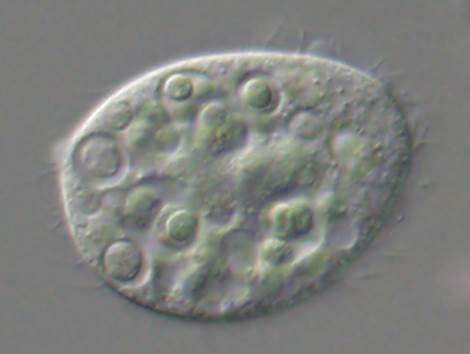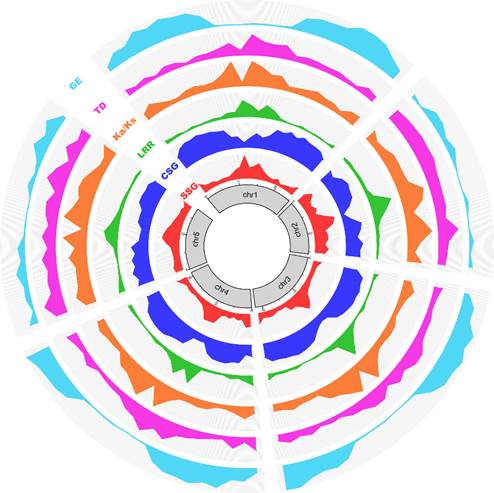
The concept of morphospecies (or cryptic species) is usually applied to a taxonomic species containing multiple morphologically indistinguishable or very similar cryptic biological species.
Finding of morphospecies from single-celled protists to higher animals over the past several decades makes people realize how common morphospecies are on our planet. The existence of such a lot of morphospecies challenges our understanding of the taxonomy, biodiversity, ecology, and evolution. However, how they are originated and evolved remains poorly understood.
Recently, the Research Group of Protozoan Functional Genomics led by Prof. MIAO Wei at the Institute of Hydrobiology (IHB) of the Chinese Academy of Sciences revealed the hidden genomic evolution behind the ten different species with indistinguishable morphology using a ciliate morphospecies (PLoS Biology, 2019, 17(6): e3000294).

Tetrahymena (Image by IHB)
The unique feature of ciliates, separation of micronucleus (germline) and macronucleus (somatic) in a single cell, gave a clear picture that what kind of genes (genome innovations) were finally employed by soma, and what kind of elements in germline played important roles in these innovations.
They found that parallel evolutionary trajectories had independently generated a large number of young (species-specific) leucine-rich repeat (LRR) genes with a unique 90-bp exon array in every Tetrahymena species examined.
These genes originated at the pericentromeric and subtelomeric regions of chromosomes in the germline genome, and underwent clonal expansions mediated by the retrotransposition of a LINE-like element in concert with unequal crossing-over.
Diverse structures and strong modular organizations for thousands of these LRR genes, somewhat like the CRISPR system in bacteria, seemed to have been employed by the somatic genome in evolution, and to contribute the environmental responses or ecological adaptation for Tetrahymena species.

Genomic evolution patterns of Tetrahymena morphospecies (Image by IHB)
Focusing on the well-known ciliate morphospecies--Tetrahymena morphospecies, they found that how the microevolution processes operated the genome changes of these morphologically very similar species.
This is the first time to open a window to the in-depth understanding of the evolution of widespread morphospecies, which has significance for several fields, from genetics, genomics, and evolution to morphospecies biodiversity.
The research was supported by the National Natural Science Foundation of China and Youth Innovation Promotion Association of the Chinese Academy of Sciences. The genomic data of this research has been integrated into the Tetrahymena Comparative Genome Database (TCGD) (Database, 2019, baz029), providing public web service.

86-10-68597521 (day)
86-10-68597289 (night)

52 Sanlihe Rd., Xicheng District,
Beijing, China (100864)

